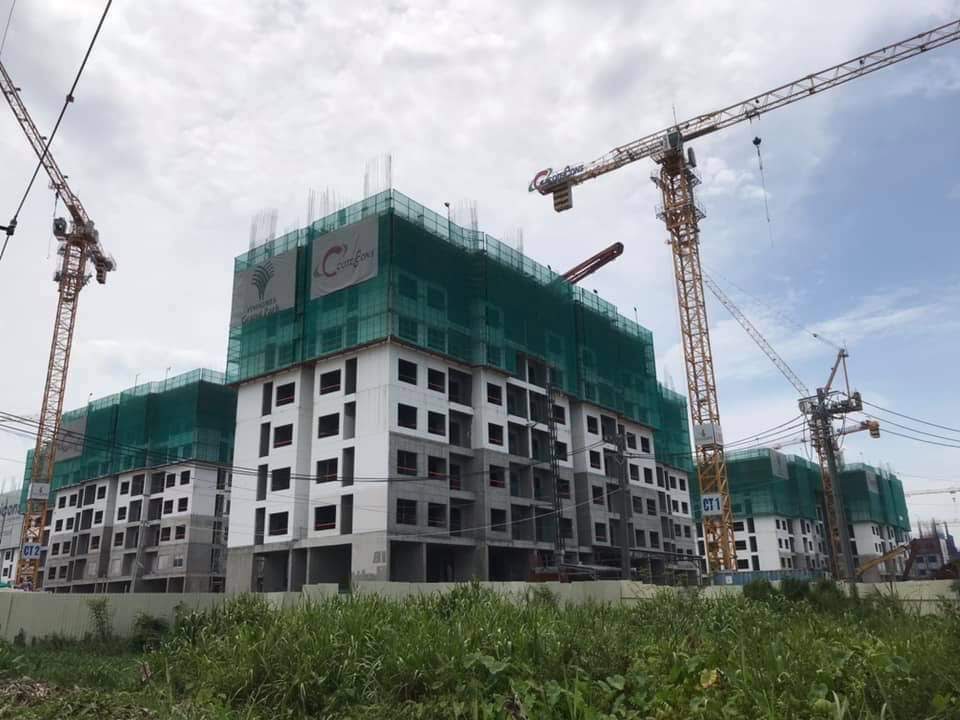Rental yields of properties in central districts have become less attractive
Renting out two apartments in suburbs and inner city at the same time, Nguyen Duc Hau, a real estate investor in Tan Binh District, HCMC, said that his 63-sqm apartment in Thu Duc had higher rental yield compared to the 86-sqm one in District 11, which has higher rent. According to the investor, these two apartments were purchased at VND1.1 billion and VND4.9 billion, and has rental prices of VND6.5 million and VND20 million per month, respectively. The rental yield of the Thu Duc apartment is around 7%/year, much higher compared to the 5-billion-worth apartment in the inner city, which has only 5% annual rental yield.
Normally, apartments at the central districts are very picky about tenants. Lease contracts for these apartments are mostly short-term with unstable revenue and fierce competition, especially low-floored apartments with the same area and rent of VND17-19 million/sqm.
Therefore, Hau said he would sell the apartment in the inner city if the yield could not meet his expectation.
Other investors in HCMC, who put their bet on high-end apartments, also experience the same situation due to the shift from the city centre to suburbs in the rental market. Many apartment projects in suburban districts such as District 12, Go Vap, Thu Duc or District 9 recorded a soft rent of 40-60% lower than projects located in the central districts. Drawback features like utilities and transportation of suburbs are no longer ominous, hence, tenants prefer properties in suburbs over ones in inner city regardless of inconvenient distance.

Do Trung Kien, Head of Design at a real estate company in District 1, said his family had to pay nearly VND16 million per month for an apartment in District 7 before moving to the current one in Pham Van Dong, adjacent to District 9, which has the same area but only VND9 million rent per month. "Far distance yet no traffic jams, full utilities, and lower rent, my wife and I feel fine with the current suburb apartment, and we can save up for our own home in the future," Mr Kien said.
Low demand but still high price
Many apartments located in the central districts still have high rental price despite low demand. Due to high selling prices, the rent of apartments in the inner HCMC has decreased significantly in recent years, but it is remaining at the level that very few households can afford in long term. According to a landlord of a high-end apartment in Binh Thanh District, his apartment has been vacant for nearly 4 months. He and his wife had to reduce the rent from VND23 million/month to VND19 million/month, but there has no change. However, he would not cut the rent further because the apartment costs nearly VND4 billion after taxes and other expenses, and any rent lower than this would be unprofitable.
Similarly, fully furnished apartments for rent in District 7 and District 4 still have an average rent of VND14 - 17 million VND/month for mid-end segment, and VND18 - 23 million/month for high-end segment, even after a sharp decline.
Meanwhile, most suburb projects have rent of only VND6 – 8 million/month for a 2-bedroom apartment and VND10 – 12 million/month for a 3-bedroom apartment. According to the representative of a brokerage firm in District 2, the abundant supply caused rental prices in both urban and suburban areas to decrease. However, as the suburban projects had soft prices ranging from 950 million to 1.5 billion, they are still profitable at the low rent of VND6.5 - 12 million/month.
Overall, the buy-to-rent market is moving downward currently. Demand for residential property will account for the majority of 40%, 30-40% for buy-to-invest, and only 15-10% for buy-to-rent. Therefore, for investors who use financial leverage to buy houses for rent, it is necessary to balance profit and expense before making the decision.

















